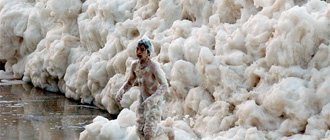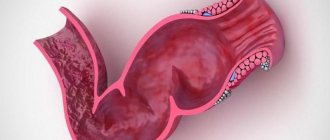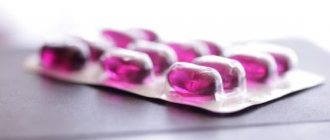Diarrhea (loose stools) is a common disorder in the form of a disorder of the gastrointestinal tract. This is an acute or chronic condition in which there is repeated uncontrolled release of stool of a liquid consistency. Sometimes diarrhea can stop on its own and is not an indicator of a pathological process. But loose stools with mucus or blood should pay special attention. Let's figure out why blood may appear in the stool and what diarrhea with blood means.
Don't panic!
A change in the color of stool does not always indicate illness. There are physiological reasons for stool turning red. If a person suspects blood in his stool, the first thing to do is remember the food he ate the day before. Some products, such as currants, beets, tomatoes, are rich in natural dye. This means that consuming them in excess the day before can simulate bloody diarrhea. Red-orange stool may be the result of eating foods fortified with beta-carotene, such as carrots or apricots. If you have consumed a large amount of these products the day before, you feel excellent and there are no additional symptoms, there is no need to worry - the red tint should disappear immediately after removing the product.
Character of blood in diarrhea
There are several options for blood in stool: stool with scarlet blood, black tarry stool - melena, stool streaked with blood.
To know what this or that type of bloody diarrhea means, you need to understand the mechanism of its appearance.
Bloody, scarlet diarrhea is an indicator of “short-range” bleeding, when the blood is not exposed to aggressive enzymatic media and acids. In this case, the likely problem lies in damage to the lower parts of the small intestine, in the large intestine, or in the perianal area. Blood not mixed with feces and released directly during bowel movements indicates possible bleeding from an anal fissure or enlarged hemorrhoids.
Melena or bloody diarrhea, colored black, is the result of mixing hemoglobin molecules with the natural acidic environment of the stomach - hydrochloric acid. The resulting hydrochloric acid hematin gives the stool a characteristic color and indicates bleeding from the upper gastrointestinal tract. Tarry, copious stools have a strong, unpleasant odor. Black color of stool appears even with relatively small bleeding of up to 50 ml.
What can be done before the doctor arrives if an adult has bloody diarrhea?
Since diarrhea is dangerous due to dehydration of the body, first aid consists of establishing a drinking regime; the daily amount of fluid consumed should be at least 2.5-3 liters. The best effect can be achieved by adding Ringer's pharmaceutical solution to the water - a multicomponent physiological solution that has a detoxification effect and normalizes the composition and consistency of the blood. In case of diarrhea, many experts recommend taking the drug Regidron.
Probiotic preparations such as Linex, Primadophilus, Bifiform and others will help to establish the balance of intestinal microflora and eliminate signs of diarrhea. However, these drugs should only be used in combination with other treatments, since they themselves are auxiliary. Before the doctor arrives, you should constantly monitor the patient’s well-being, noting the appearance of new symptoms and changes in the amount of blood in the stool. This information will help the specialist in making a diagnosis and prescribing effective treatment.
Main causes of bloody diarrhea
Bloody diarrhea in an adult requires careful study due to differences in origin. Below are diseases that can cause loose stools with blood.
Peptic ulcer of the stomach and duodenum
The disease is characterized by damage to the gastroduodenal zone with the formation of an ulcerative defect. Among the root causes are Helicobacter pylori infection and hyperproduction of hydrochloric acid. A high degree of disease activity is accompanied by inflammation of the mucous layer, widespread swelling and redness with focal defects (erosions). A complication in the form of bleeding is possible with the slightest irritation of the damaged mucosa. Ulcers of the duodenum bleed several times more often than gastric ulcers, and sometimes bleeding is the first sign.
In addition to stool with melena, vomiting of scarlet blood and symptoms of acute blood loss are possible. If there is a complication in the form of diarrhea with blood and vomiting, Bergmann's symptom is observed - a sudden disappearance of pain. Such bleeding is life-threatening, so the patient must be urgently hospitalized in the surgical department.
Gastrointestinal tract infections
Infections that are tropic to the digestive tract - shigellosis (dysentery), salmonellosis - produce toxins that damage the mucous membrane. In this case, the stool is liquid, rapid, unformed, and in severe cases it reaches up to 20 times a day.
What does blood with diarrhea and temperature mean?
A temperature reaction is always a consequence of inflammatory or intoxication processes. It is important to look at its meanings.
Fever of 38 degrees and above (often difficult to control) in combination with vomiting and diarrhea with blood is the result of a hyperergic reaction of the body to toxins of the infectious agent. There are many options: dysentery, salmonellosis, staphylococcal, rotavirus infection. Each infection has its own characteristics and is confirmed only after laboratory tests. In case of acute infectious processes, self-medication is contraindicated, and in severe cases, you should call an ambulance.
Fever up to 38 degrees with or without chills is a reflection of the inflammatory process. In combination with diarrhea, such a complex of symptoms is possible with exacerbation of chronic inflammatory diseases of the intestines, pancreas, gall bladder, and dyskinesia. An infectious disease cannot be ruled out.
What is the danger
Short-term and not too frequent diarrhea is not dangerous, however, taking into account the reasons that caused it, the following risks can be identified:
- Dehydration. In infectious diseases, stools are usually very frequent and watery. Diarrhea is especially dangerous for a small child who is rapidly losing water reserves in the body. For a baby, the loss of even a small percentage of fluid can lead to death. Therefore, if a child or teenager suddenly has a fever and green diarrhea, especially with blood, you should immediately call an ambulance.
- If blood in the stool appears due to hemorrhoids, it also needs to be treated, since the disease is characterized by persistent progression and will eventually reach stage 4, at which patients suffer from intense pain and the inability to go to the toilet normally. The final stages of the disease require surgical intervention. Therapy at earlier stages with ointments and suppositories will help quickly eliminate the problem at home, even against the background of diarrhea.
Stages of development of hemorrhoids
Bloody diarrhea after antibiotics
Side effects are the other side of long-term use of antibacterial drugs. One of the complications is diarrhea with blood discharge. Diarrhea with blood after antibiotics can become more frequent up to 7-10 times a day, intoxication manifestations are not excluded.
Antibiotic therapy destroys in its path not only pathogenic, but also beneficial flora of the body. The resulting dysbiotic processes can give rise to new health problems. Therefore, antibiotics should be prescribed rationally and accompanied by probiotics in 100% of cases.
Green-colored stool
Green diarrhea with blood is also not so rare in people. Treatment for the presence of green stool directly depends on the reasons for its appearance. Some factors are completely safe. But there are some that pose a potential threat to human health.
Greenish bloody diarrhea can potentially be caused by:
- dangerous intestinal infections,
- microflora disturbance,
- reduced immunity,
- antibiotics,
- dysentery,
- metabolic disorder,
- high level of hemoglobin,
- disruption of the digestive process.
In addition to the loose stool itself, a person’s stomach hurts, he feels nauseous, he feels weak, and his temperature rises. In this case, it is necessary to do a stool analysis, identify the causes of the change in the color of the stool and undergo a course of treatment prescribed by a specialist.
Vomiting and diarrhea with blood
Vomiting is not a highly specific symptom, but indicates a disruption in the normal functioning of the gastrointestinal tract.
When vomiting in combination with diarrhea and a temperature above 38 degrees, you should think about an infectious process. In some cases, vomiting has its own characteristics. For example, infection with Vibrio cholera is characterized by repeated profuse vomiting, which does not bring relief.
One- or two-time vomiting with or without low-grade fever occurs with exacerbation of chronic diseases of the digestive system: pancreatitis, cholecystitis, biliary dyskinesia. In this case, additional symptoms appear: girdle pain or tenderness in the right hypochondrium, sour belching, bitterness in the mouth.
Diarrhea streaked with blood
Streaks of blood in the stool reflect a local inflammatory process or a limited area of bleeding. Diarrhea streaked with blood varies in consistency: with dark-colored clots of coagulated blood, the stomach or duodenum is suspected. With clearly defined bright red – the lower intestines.
The appearance of bloody inclusions can be an indirect sign of parasitic infestations: when parasites enter the intestines, they injure the mucous layer and violate its integrity.
What to do?
For large fluid losses, the first treatment is to replenish the water-salt balance. For this purpose, increase its consumption to 2-3 liters per day. The average calculation of rehydration of an adult body with moderate dehydration is about 40 ml per 1 kg of body weight. Ringer's, Regidron, and Gidrovit glucose-salt solutions are widely used. The drugs are sold in pharmacies. Does not require parenteral administration. Their use is indicated even for mild diarrhea with minimal fluid loss.
Diarrhea is often accompanied by a local and general inflammatory process as a result of irritation of the intestinal wall and the release of toxins. To bind toxins, agents with surface-active adsorbing properties are used. By binding harmful substances, they relieve gastrointestinal manifestations. Such drugs include activated carbon, Enterosgel, Smecta.
For diarrhea of any origin, it is impossible to do without treatment with probiotics as part of a complex treatment. Their main function is to combat dysbacteriosis and restore normal microflora. These drugs include Linex, Hilak-Forte, Bifiform, Fertal.
It is impossible to cure diarrhea without following a diet. During illness, avoid fatty, fried, salty and spicy foods. It is recommended to eat soft and liquid foods, boiled, stewed or steamed foods. Diets are followed until complete recovery.
Treatment
Treatment of frequent bloody diarrhea in an adult should be carried out exclusively under the supervision of a doctor. You need to either make an appointment with a specialist, or, depending on the severity of the situation, call an ambulance. Calling an ambulance is mandatory if, in addition to bloody diarrhea, the patient has a high temperature, weakness, a significant decrease in blood pressure, and sharp pain in the abdominal area.
The doctor, having examined the patient initially, will prescribe a series of studies and tests that will help assess the whole picture, make the correct diagnosis and begin treatment. As you understand, diarrhea is only a symptom, and therapy will depend on where exactly the malfunction occurred in the body.
The patient will have general blood and urine tests, as well as a stool test to determine whether it contains a parasite, microflora disorders, etc. The doctor can give a referral for irrigoscopy, colonoscopy, FGDS, ultrasound examination, MRI and X-ray.
How to alleviate your condition before visiting a doctor? How to treat such diarrhea at home? You will find all the information about treating diarrhea at home in adults on our website.
- It is absolutely necessary to restore the water-salt balance, because if this is not done, symptoms of dehydration may be added to the painful condition from an existing disease. To quickly restore the balance of water and salts in the body, you need to purchase Ringer's solution or Regidron powder at the pharmacy. If you can’t go to the pharmacy, make the solution yourself at home: dilute a tablespoon of sugar, a teaspoon of salt and half a teaspoon of soda in a liter of water.
- Try to gently normalize the stool. For any disease, the safest remedy that can be taken without a doctor’s prescription is probiotics: Linex, Hilak-Forte, Bifiform. But although they are recommended for bowel disorders of any type, the disease cannot be cured, remember this.
Useful on our website: diet for diarrhea in an adult










